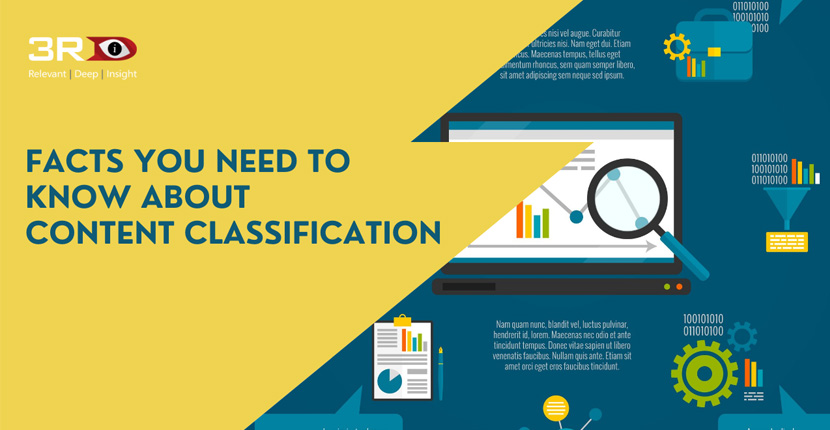
Facts You Need to Know About Content Classification
With the enormously large volumes of corporate information, it's natural to want to organize it. This makes it simple to find it in a content management system or on a website. One technique to make the examination of corporate content easier is to classify it. It is described as the process of categorizing stuff according to predetermined categories. It can be done either manually or using algorithms. While the manual procedure is fine for little amounts of data, when big amounts of data are involved, such as business data, algorithms that make the operation easier and simpler are required. The new age enterprise search platforms offer advanced content classification system.
Here we have 5 key content classification facts that you should know.
1] Significance of Content Classification
By examining the whole text of documents and emails and applying rules that automate classification, the Content Classification platform aids in the organization of unstructured content. Classification can also be used to identify whether or not a piece of content requires classification. Content Classification works by determining the true meaning of words and then using that information to automate decision-making. It incorporates real-time learning that adapts to changing business needs by combining rules and contextual analysis.
2] How Content Classification Works
When we talk about content Classification platforms, it can be defined as the process of classifying a document to one or more classes based on its content. Classes are chosen from a taxonomy that has already been defined (a hierarchy of categories or classes). Text extraction, tokenization, stopword removal and other preprocessing steps required for automated content classification & analysis are handled by the Text Classification API.
3] Increasing Data Volumes Makes Content Classification Important
Every day, our enterprises generate ever-increasing amounts of unstructured information. Email usage is increasing all across the world. And the number of ways to communicate and collaborate continues to grow. SMS, instant messaging, social media feed, and multiple other sources of data can be overwhelming at times. Add to this the emergence of articles and blogs are powerful medium, and you have data that is a lot more than you can manage. This makes the need for an advanced content classification platform extremely significant.
4] Content Classification Can Help Save Money
When it comes to content classification, most businesses use one of two ways. Take, for example, the issue of archiving data for future reference. One common approach is that since it is difficult to figure out which data is important, it is better to store all of the data. However, with the large volumes of enterprise data that is ever on the increase, this approach is not a viable solution for the long term. In such a scenario, an advanced content classification platform will help you save storage expenses by allowing you to save only the information that deserves to be saved.
5] You Need an Advanced Platform for Automated Content Classification
When you have an advanced content classification platform such as 3RDi Search, there will be no errors and the results are going to be accurate. Furthermore, with such massive volumes of data to be categorized, the operation would be nearly impossible to do manually and would take an inordinate amount of time. The process of content classification is made easier and more efficient by using a platform to automate the process.
If you're looking for a powerful content classification platform for effective and fast analysis of your enterprise data, visit www.3rdisearch.com/ or drop us an email on info@3rdisearch.com and our team will get in touch with you.